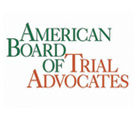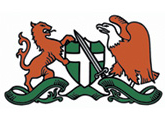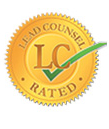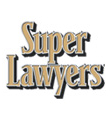T-bone accidents cause significant property damage, injuries, and, in worst-case scenarios, fatalities. These crashes occur when the driver of the front car strikes the side of another at a perpendicular angle, thus forming a "T" shape. The side of a vehicle does not offer the same level of protection as the front or rear. This makes side-impact collisions especially dangerous. The impact can cause grave injuries to the occupants of both cars.
You can seek compensation for the injuries you have sustained, damages, and loss of a loved one due to the T-bone accident. But first, you must understand the likely causes of a broadside accident. The reasons form the basis for identifying the party responsible for the accident and the party to seek damages from in a personal injury case.
Causes of a T-bone Collision
A T-bone collision is also known as a broadside or side-impact collision. This accident can occur for a variety of reasons. Some of the most common causes of broadside crashes include:
- Drivers running red lights or stop signs — When a driver fails to stop at red lights, he/she can cause T-bone collisions after colliding with a vehicle crossing the intersection.
- Failing to yield the right of way — When drivers fail to give the right of way to another vehicle, they are likely to cause a broadside accident upon collision with the other car.
- Distracted driving — Drivers distracted by their phones, food, or other activities could fail to notice other vehicles on the road. These distractions increase the risk of a broadside collision.
- Impaired driving — Drivers under the influence of drugs or alcohol have slowed reaction times or poor judgment. An impaired driver is a potential hazard since he/she is unlikely to respond as a sober driver, especially in an intersection. He/she is likely to drive through without stopping, thus causing a crash.
- Speeding — Drivers traveling at high speeds have difficulty stopping in time to avoid a T-bone collision, especially when approaching an intersection.
- Poor weather conditions, like rain, snow, or fog, can make it difficult for drivers to see other vehicles. These conditions significantly contribute to the risk of a broadside collision.
- Vehicle defects — Defective brakes, loss of steering control, or other components can cause a driver to lose control of their vehicle. A side-impact collision is likely if this situation occurs when approaching an intersection.
Drivers are encouraged to practice safe driving habits to help prevent T-bone collisions and other types of accidents. Most accidents can be prevented by following traffic laws, paying attention to the road, and avoiding distracted or impaired driving.
Right of Way
The right-of-way rule allows motorists to proceed first and others to wait until the road is clear. A failure to yield the right of way is a traffic violation.
For example, when a driver ignores a stop sign or a red light and decides to drive into an intersection, there is a probability that he/she will hit a vehicle whose driver has the right of way. Likewise, if a driver makes a left turn in front of oncoming traffic, a similar likelihood of causing a broadside collision exists.
Yielding to a vehicle with the right of way applies to all motorists, including pedestrians and cyclists.
Left or U-turn
Left turn or U-turn accidents are a common type of T-bone accident. In U-turn scenarios, accidents occur when one driver attempts to make a left turn and collides with another vehicle traveling in the opposite direction. Left-turn accidents can be exceptionally dangerous since the impact of the collision is usually on the side of the car.
Most U-turn accidents occur when drivers fail to yield to another vehicle with the right of way.
For example, if a driver makes a left turn in front of oncoming traffic and fails to check for oncoming vehicles, he/she could cause a collision. In this scenario, he/she could be at fault for the accident. Similarly, when a driver attempts to make a U-turn on a busy road and collides with another vehicle, he/she would be responsible for the accident.
Other factors could lead to U-turn accidents. Distracted driving, speeding, or driving under the influence of drugs or alcohol are some common contributors. Drivers should always exercise caution when making left turns or U-turns and follow all traffic laws and signals.
Running a Stop Sign or Red Light
Running a stop sign or red light is typical. It seems like a trivial undertaking when drivers do it. However, it results in catastrophic crashes. Most drivers try to beat the light. Thus, they drive through the intersection at high speeds. If they come into contact with another vehicle entering the junction, the brunt of the impact is on the victim’s vehicle’s side. As pointed out, the side is not equipped with the same safety measures as the front. Thus, the victim sustains significant force from the impact.
When you run a red light, you commit a traffic violation. In a civil matter, evidence of a driver running a red light is enough to point to him/her being at fault. Thus, a jury could hold him/her liable for the crash. Therefore, the at-fault driver would be responsible for the damages the accident caused.
In some situations, the driver with the right of way could also be partially at fault for the accident.
For example, a driver traveling at an excessive speed enters an intersection after the traffic light turns green. He/she will have difficulty controlling the vehicle to avoid colliding with a car whose driver runs a red light. The driver who ran the red light could be primarily at fault. But a jury would hold the victim partially at fault for failing to exercise reasonable caution (driving at an excessive speed).
Parties to Blame for T-Bone Accidents
Determining fault in a side-impact collision requires examining the specific circumstances of the accident. In a side-impact collision, one vehicle strikes another car on the side, typically at a right angle. This type of accident can occur at an intersection or parking lot.
Fault in a side-impact crash is based on negligence. Negligence arises when one party fails to exercise reasonable care. All motorists bear the legal duty of care while on the road. They are meant to adhere to traffic laws and practice safe driving. A failure on their part is deemed as negligence since it could result in a crash and, with it, the loss of life, property damage, and injuries.
As the plaintiff in a personal injury lawsuit, you must prove negligence. Only then will the jury award you damages. As the injured party, you must demonstrate that the other driver had a duty to exercise reasonable care. Further, it must be clear that the other driver breached that duty, and the breach caused the injuries and damages.
Courts require plaintiffs to prove the following in personal injury cases. They are the elements of negligence:
- The driver owed you a duty of care.
- The driver breached the duty of care through negligence.
- The driver’s negligence contributed significantly to your injuries.
California is a comparative negligence state. Therefore, in a personal injury case, the court considers the degree of fault for each party involved in the crash. Under comparative negligence, the plaintiff's damages award is reduced by the percentage of fault attributed to them.
For example, if you are a victim of an accident and the court determines that you were 20% at fault for the accident, your award would be reduced by 20%. Therefore, if the courts award you $100,000 in damages, you will only receive $80,000.
Further, in California, the pure comparative negligence rule applies. This means that even if you bear 99% responsibility for the crash as the injured party, you can still recover damages from the defendant. In this case, you will receive 1% of the damages awarded, with 1% representing the percentage of the defendant’s fault.
Comparative negligence can be a complex legal concept, and the degree of fault attributed to each party varies depending on the particular circumstances of the case.
Additionally, it is worth noting that other factors can also cause a side-impact collision. Poor roads, improper signage, and traffic lights failing to work correctly contribute to T-bone collisions. If any of these factors feature in your case, then the government agencies responsible for road maintenance would be at fault and a defendant. If there was a manufacturing defect with the vehicle or it was not maintained properly, the vehicle manufacturer and the mechanic (respectively) would be responsible.
Injuries in a T-Bone Collision
The injuries a driver or passenger could suffer vary depending on the particular circumstances of the accident. T-bone collisions are often more severe than rear-end or head-on collisions. The side of a vehicle provides less protection than the front or back. Thus, the force of the impact directly hits the car's occupants. Some common injuries in a broadside collision include:
- Head injuries occur when the vehicle occupants’ heads hit the window or door. Head injuries can be mild concussions or severe traumatic brain injuries.
- Neck injuries — The force of a T-bone collision can cause whiplash. This neck injury is common, and it causes pain and stiffness.
- Back injuries, like herniated discs or spinal cord injuries, are common in side-impact crashes. These injuries can be severe. Thus you could require long-term medical care.
- Broken bones — Most broadside collision victims sustain a variety of broken bones, including broken arms, legs, hips, and ribs.
- Internal injuries — The force of the impact can cause internal injuries, including organ damage or internal bleeding.
- Psychological injuries — Side-impact crash victims also suffer psychological injuries, including post-traumatic stress disorder (PTSD) or anxiety.
You must seek medical attention after a T-bone collision, even if you do not immediately feel injured. Some injuries could not be immediately apparent.
Damages Available in a Side Impact Collision Settlement
The damages that could be available to the injured party or parties depend on the particular circumstances of the accident. Here is a look at some of the common damages plaintiffs seek and juries award in side-impact crash settlements:
- Property damage — You are entitled to compensation for the cost of repairs or the car's fair market value if your insurance provider deems the damaged car a total loss.
- Medical expenses — If you or your passenger sustains injuries, a jury could award damages to cater for your medical expenses, including hospital bills, doctor's visits, medication, and rehabilitation.
- Lost income — If you or your vehicle’s occupants cannot work due to your injuries, the courts will award you compensation for your lost income, including wages, salary, and benefits.
- Pain and suffering — Any experiences of physical pain, emotional distress, or a reduced quality of life due to their injuries are grounds for an award in damages.
- Punitive damages — Courts can also award punitive damages. This is possible if the at-fault party's behavior is egregious or reckless.
What if an Uninsured Driver T-boned Me? Do I Have a Claim?
If an uninsured driver t-boned you, you could recover damages. However, the recovery process could be more complicated than if the other driver had insurance.
Here are a few options available to you:
-
Uninsured Motorist Coverage
Filing a claim with your insurance company for damages is possible if you have uninsured motorist coverage as part of your auto insurance policy. This coverage protects you when you are injured in an accident with an uninsured driver.
-
Personal Injury Lawsuit
You can opt to go to court and file a personal injury lawsuit against the at-fault driver to recover damages. However, even if you win a judgment against the other driver, you could face difficulty collecting on it if they do not have the assets or income to pay the damages.
-
MedPay
MedPay, or medical payments coverage, is an optional insurance coverage that helps cover medical expenses for you and your passengers, regardless of who was at fault for the accident. With MedPay coverage, you can pay for medical bills resulting from the side impact accident.
Should I Enlist the Services of a Personal Injury Attorney After a T-bone Crash?
Hiring an attorney is a good idea if you are the victim of a broadside crash. Here are some reasons why:
-
Legal Knowledge and Experience
An experienced personal injury lawyer will help you understand your legal rights and options when seeking compensation. They can advise you on steps to take to protect your legal interests. Further, an attorney will help you avoid common mistakes that could hurt your case.
-
Evidence Gathering
Evidence is crucial in court cases. A lawyer can help gather the evidence needed to build a strong case. This can include gathering witness statements, obtaining police reports and medical records, and collecting other documentation relevant to your case.
-
Negotiation and Settlement
An attorney can help you negotiate a fair settlement if the other driver's insurance company or legal team offers one. Fair compensation covers all your damages, including medical expenses, lost wages, and pain and suffering. Lawyers can also help you decide whether to accept a settlement or pursue a trial.
-
Court Representation
Should your case proceed to trial, you will need legal representation. Your lawyer will argue your case before a judge or jury. He/she can help you present evidence, cross-examine witnesses, and make compelling arguments on your behalf.
Keep in mind that many personal injury lawyers work on a contingency-fee-basis. This means they only get paid if you receive a settlement or judgment in your favor. This can make it easier for you to afford legal representation. It also incentivizes your lawyer to work hard to get you the compensation you deserve.
Hiring a lawyer after a broadside crash can help you protect your legal rights, maximize your compensation, and avoid the stress and confusion of navigating the legal system on your own.
What Can I Do If My Loved Ones Were Killed in a T-Bone Collision?
You can seek compensation through two lawsuits, depending on your circumstances.
-
Wrongful Death Claim
You can file a wrongful death claim when your loved one dies in a side-impact collision. A wrongful death claim seeks compensation for the damages caused by the death. These include medical expenses incurred prior to the victim’s demise, funeral costs, lost income, and loss of companionship.
Only surviving members can file a wrongful death claim. These members include a spouse, child, or parent. The plaintiff(s) must also demonstrate that the defendant's negligence or intentional act caused the victim's death.
The damages you can recover in a wrongful death claim vary depending on the case's specific circumstances. The damages include compensation for medical expenses, funeral costs, lost income, and non-economic damages like pain and suffering and loss of companionship.
-
A Survival Action Claim
In addition to a wrongful death claim, you can file a survival action. This is a legal claim brought by the estate of a deceased person for damages suffered by the decedent before the demise of their loved one. The survival action seeks to compensate the decedent's estate for losses incurred by the decedent before their death. They include pain and suffering, lost wages, and medical expenses.
Unlike a wrongful death claim, a survival action is not brought by surviving family members but rather by the deceased's estate. The damages recovered in a survival action go to the estate rather than to the surviving family members.
In pursuing this legal action, the plaintiff must demonstrate that the deceased suffered some injury or harm due to the defendant's conduct. Further, he/she must prove that the injury or harm was a cause of the deceased person's death.
Contact a Los Angeles Car Accident Attorney Near Me
Car accidents significantly impact the survivor’s life, including the surviving members of a loved one. The financial implications of the losses these individuals suffer deserve compensation. The Los Angeles Car Accident Attorney strives to obtain just compensation for your losses. Contact our team today at 424-237-3600 for a free case evaluation.






